“Anthropogenic Mass” is the title of Michel Lamoller’s upcoming exhibition at The Ravestijn Gallery in Amsterdam and refers to a study conducted by the Weizman Institute based in Tel Aviv that states that we have reached the point in which all man-made things on planet earth have the same weight as all natural biomass.
Let that sink in for a moment. Concrete tops the list of manmade mass. As it is used for building and infrastructure, it is the second most used substance in the world after water. The “man-made landscapes” Michel Lamoller focuses on in his latest works wouldn’t exist without concrete.
A few months ago I visited Lamoller in his studio and had the opportunity to see some of his new work before it was shipped to Amsterdam for his solo show. While gazing at the largest photographic sculpture depicting the Japanese megacity Osaka I distinctively remember feeling I was losing my balance for a few seconds, and as if I were floating in, through and into the image at the same time. The rules of up and down and perspective no longer applied.
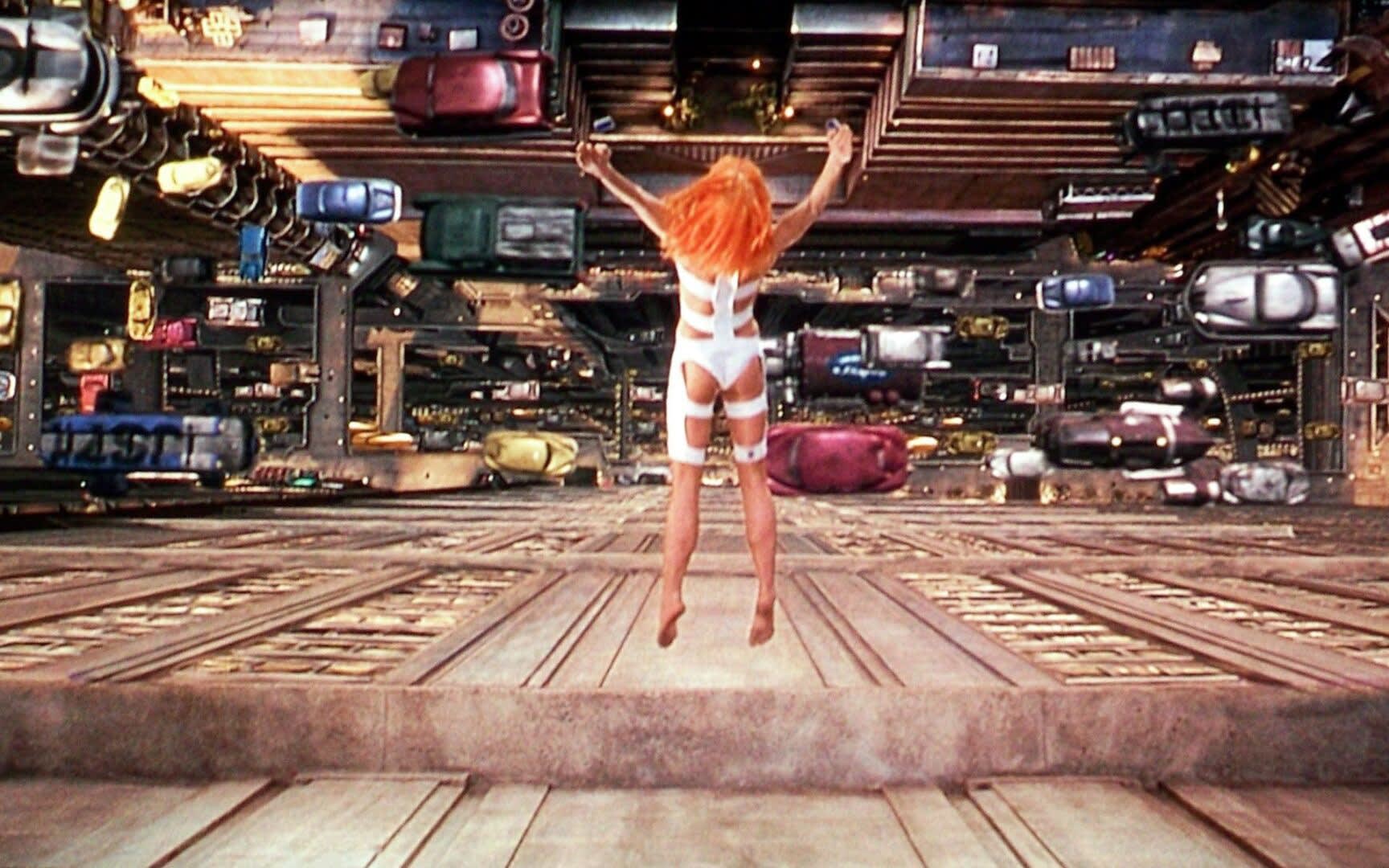
The 5th Element, Luc Besson, Film still, 1997
Remember the Luc Besson movie The Fifth Element of 1997 and how cars fly through the skyscrapers and there is no beginning or end? And then the scene with Milla Jovovich when she jumps of that crazy high up windowsill and just floats above the traffic beneath her but also seemingly through the endless space of city? That’s how I felt. So even months later I can catapult myself back into Lamoller’s studio and get this feeling again, like I can visually taste it. I thought for a moment how would I describe this effect and what I came up with is that it seems to have entered my own personal library of art memories that can at all times trigger a chemical reaction in my brain and emotions and thus leave a trace in my consciousness. Simple as that.
But how does Michel Lamoller achieve this hypnotic fragmented, yet dense effect? The Ravestijn Gallery describes it perfectly:
"Lamoller’s works are not photographs of man-made landscapes, but objects about man-made landscapes. Lamoller starts with a photograph, but that image is not then printed, framed and hung in the modernist sense of a picture. Instead, Lamoller prints the same photograph multiple times, before stacking them on top of each other like the bellows of an accordion. Lamoller then uses a scalpel to meticulously cut away sections of each photograph — a process that can take several weeks…"
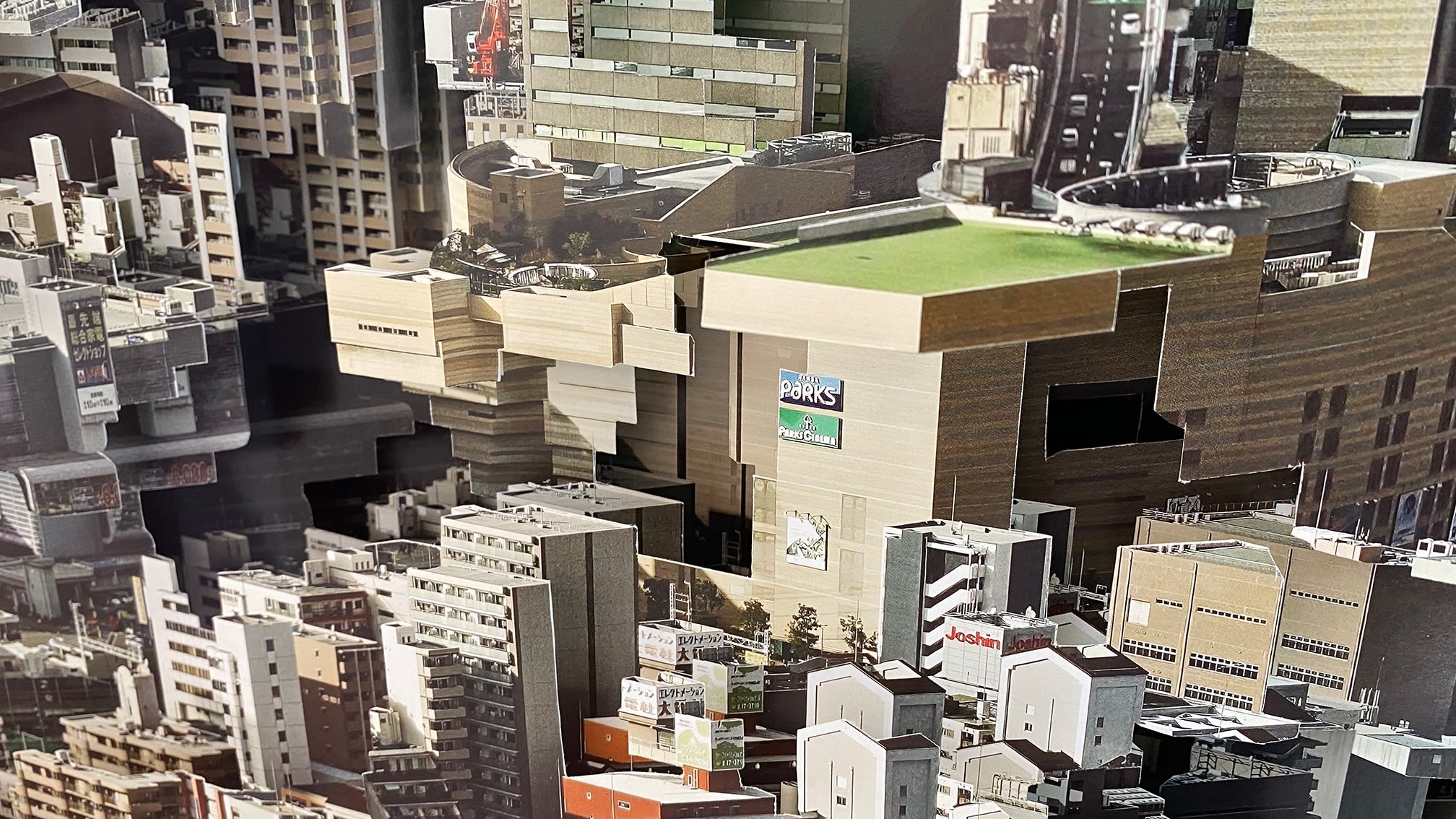
Anthropogenic Mass 6 (Osaka), 2022, Detail A © Michel Lamoller / courtesy The Ravestijn Gallery
Apparently precision and patience play a big role in Lamoller’s work – the results speak for themselves. Needless to say his answers to our signature question didn’t disappoint!
Art as Leitmotif
Question: Which of the five lements (space, air, fire, water, earth) would you choose in relation to your practice or yourself, and why?
Answer: Earth! Most of my works relate to ideas of landscape and nature and I call them layerscapes. I work with the surface of images, cutting and “digging” my way until the very last layer on the bottom.
Q: Is there a particular artists or situations that inspired you to become an artist?
A: There were several inspirations in my youth. The first artist I could connect to was the Romantic painter Caspar David Friedrich. Back then I went into nature to make drawings of natural patterns, plants and landscapes.
"I identified with the romantic idea of the artist as someone who first needs to train his or her perception, be sensitive and then can create something sublime that can touch others as well."

Anthropogenic Mass 4 (Shanghai), 2022, Detail A © Michel Lamoller / courtesy The Ravestijn Gallery
Again, this was at age 16. An artist role model was my art teacher who was also the father of my girlfriend at the time. I loved the nights in his studio, drinking red wine, smoking cigarettes in front of the wood stove. Sounds familiar?
"Seeing this I started to feel that art can be a Leitmotif for my life as well."
And it did, sounds cheesy but art is my life.
Q: Do you consider yourself spiritual and how does this feed into your work?
A: I don’t consider myself spiritual. I believe in chance and the religion of science but I do enjoy a good story that is based on destiny.
Tipping Points & Slow Art
Q: Is there an author or book you are reading or in general that inspires you?
A: Definitely many. To start with an easy one, I loved all the books by Yuval Noah Harari who for me really opened a lot of windows and sparked many thought processes. I love the way he dares to draw a big frame and picture and how he tells the history of ideas.
Last year I was blown away by the study Tel Avivs Weizman Institute called “Anthropogenic Mass”. It shows that this year all man-made things on Planet Earth have reached the same weight as all biomass.
"It is a tipping point in out history and symbolizes our relation to the planet."
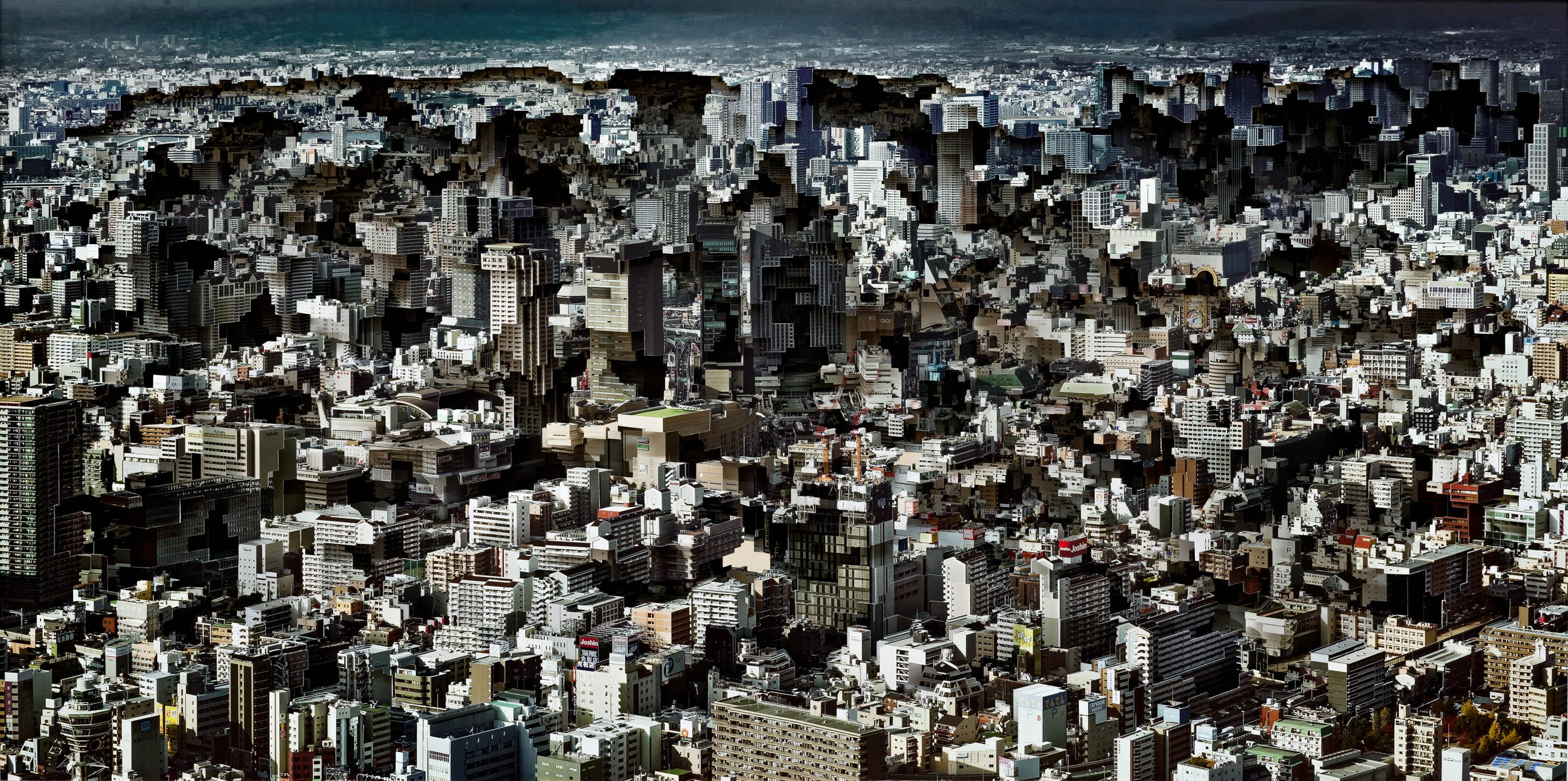 Anthropogenic Mass 6 (Osaka), 2022 © Michel Lamoller / courtesy The Ravestijn Gallery
Anthropogenic Mass 6 (Osaka), 2022 © Michel Lamoller / courtesy The Ravestijn Gallery
Layers of Perception
Q: Where do you find inspiration, how can we imagine your process while creating work?
A: Inspiration is always there, since the last year of my studies at HfbK Hamburg I have been constantly full of ideas. During the working process one thing leads to another and there is always something new I want to find out in my work.
My working process is unfortunately extremly slow, it can take me up to months to create a single piece, so I cannot realise all the ideas I have.
Most of the time I need for using my scalpel knife on photographs. I layer the prints and like this create bas-reliefs.
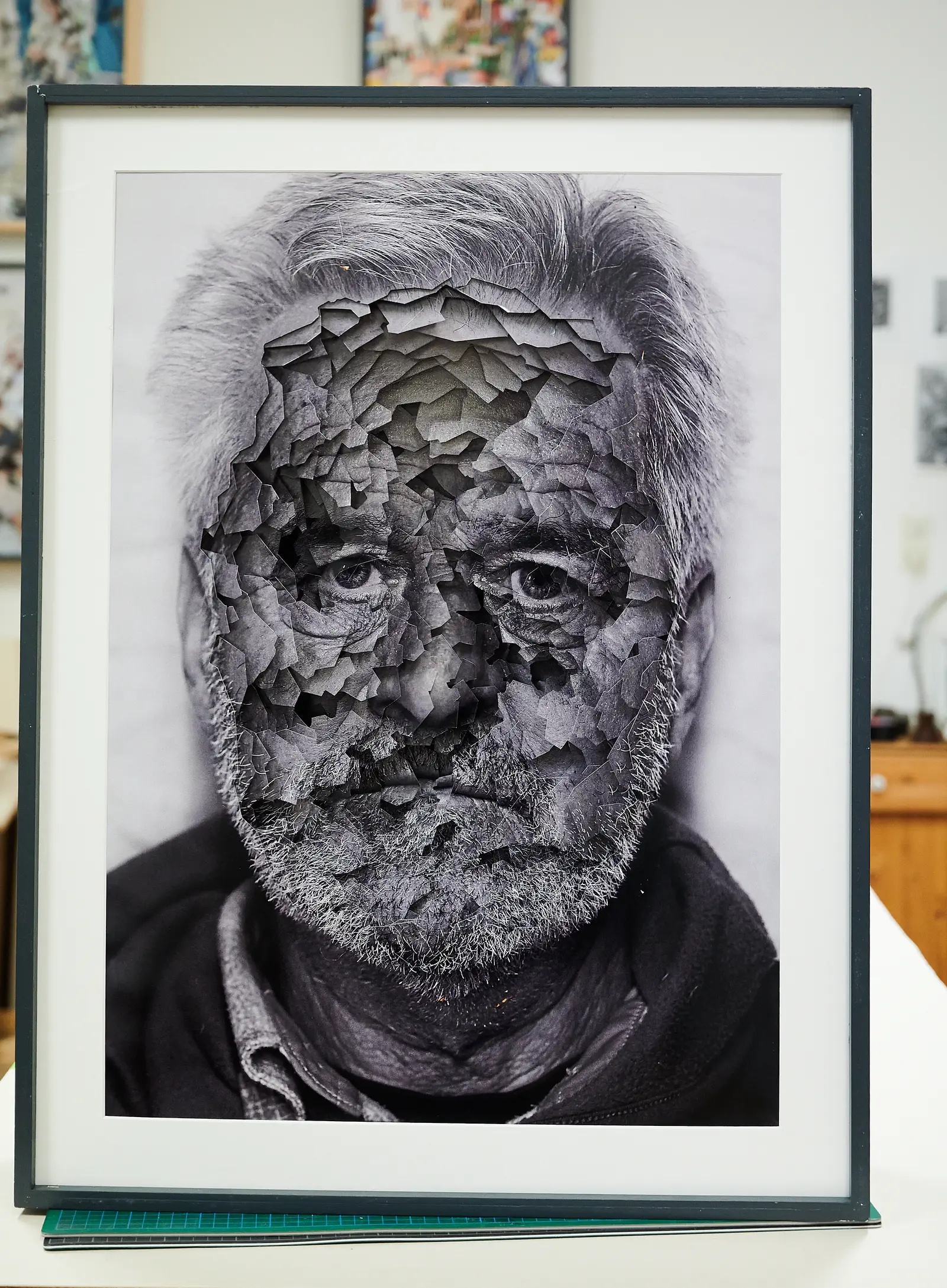
Facescape #, 2015 © Michel Lamoller
Q: Aesthetics and Process aside, which emotion you want to trigger with your work and why?
A: I don’t intend to trigger certain emotions. I don’t think that artists want to do that (maybe except horror movie directors).
"I believe that our job is to develop something that can stand on its own, that is alive."
How somebody else later on perceives that thing is totally out of my control. Every person is different depending on the personal biography, political believes, emotional issues, historical settings. There is no way that one artwork can aim to trigger the same emotion in all of these possible individual observers.
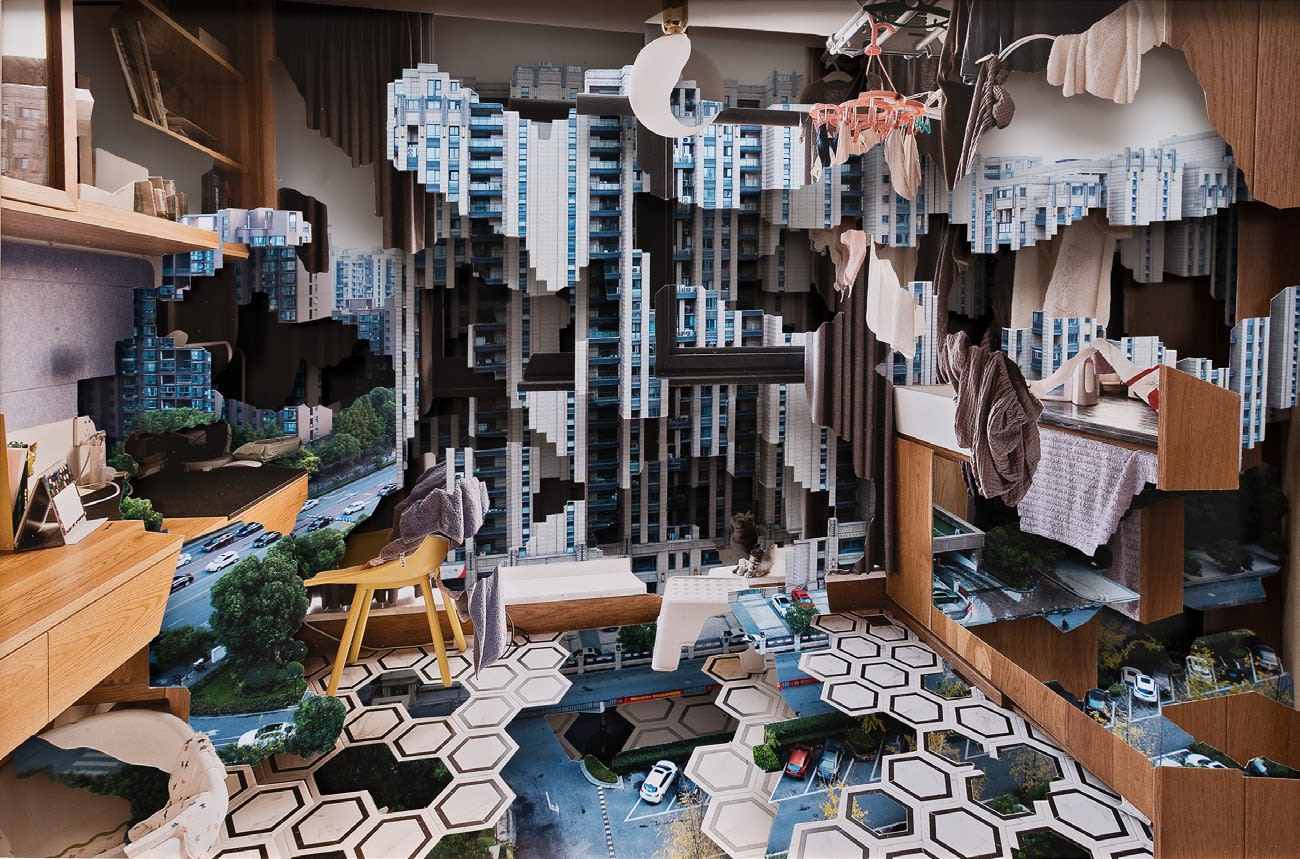
Anthropogenic Mass 5 (Hangzhou), 2022 © Michel Lamoller / courtesy The Ravestijn Gallery
Feeling Time
Q: Please tell us what your looking forward to this year?
A: I am looking forward to my solo show at the Ravestijn Gallery in Amsterdam in April, May and June 2022. Generally I am a very optimistic person. I am looking forward to spending time in the studio, developing works that I feel are necessary for me to do.
"Doing art really is an urge."
And then I am looking forward to seeing my kids grow up. Seeing this, I can feel the time.
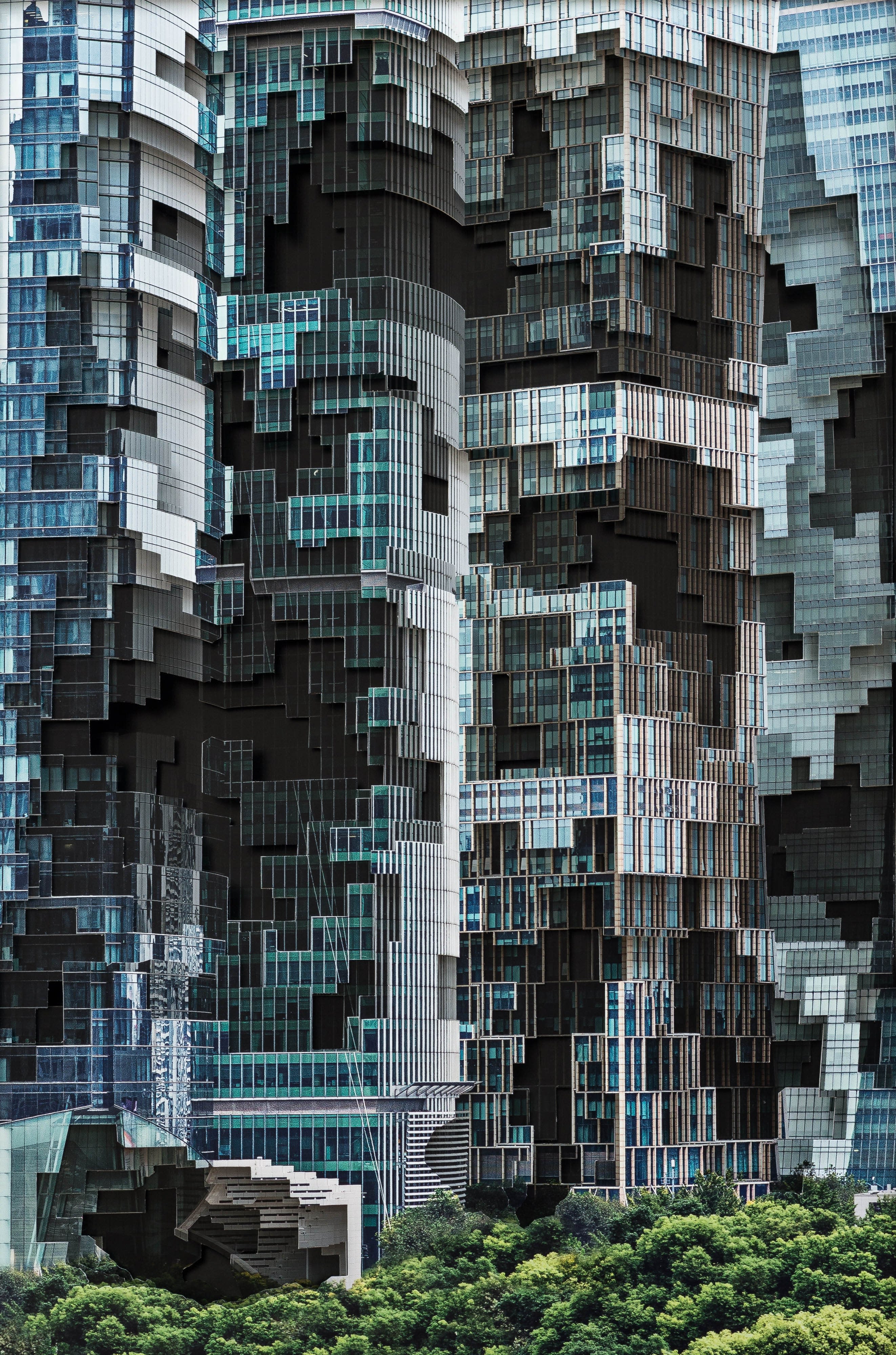
Anthropogenic Mass 2 (Shanghai), 2022 © Michel Lamoller / courtesy The Ravestijn Gallery
Q: If you could, what would you change in the art market?
A: I would make the art market to be more transparent.
"An artwork should not be become an trade asset totally detached from its creators will."
At least we artists should have a say what happens to the work and whom it gets sold to on the secondary market. Artists should get their share when works get sold at auctions and keep control over their career, of which many have been ruined by hypes and greed.

Anthropogenic Mass 1 (Shanghai), 2022 © Michel Lamoller / courtesy The Ravestijn Gallery
Q: The future is .. ?
A: “Unwritten” is my obvious, spontaneous answer (influenced by the documentary movie about Joe Strummer). When we care too much about the future we loose the present. In reference to creating art: I care only about what feels important to do now.
"It doesn’t make sense to me to create for somebody else and least of all for the future art history."
The future is unwritten.

